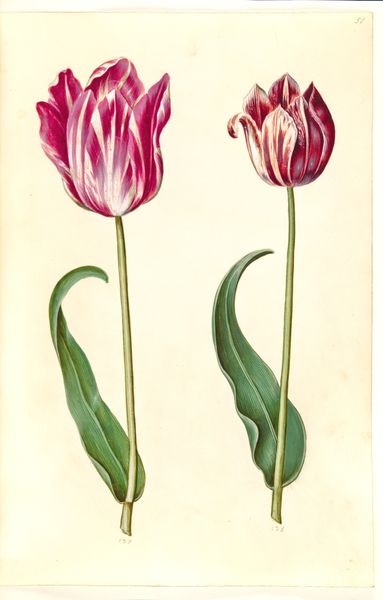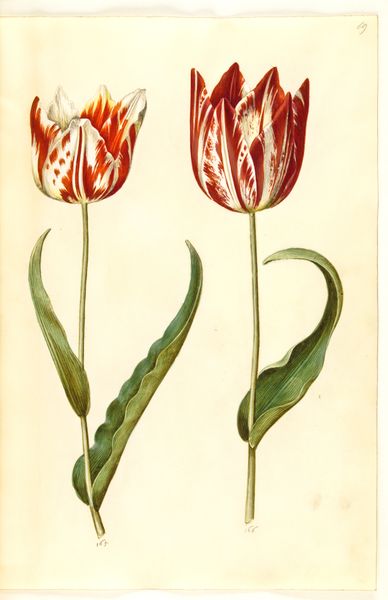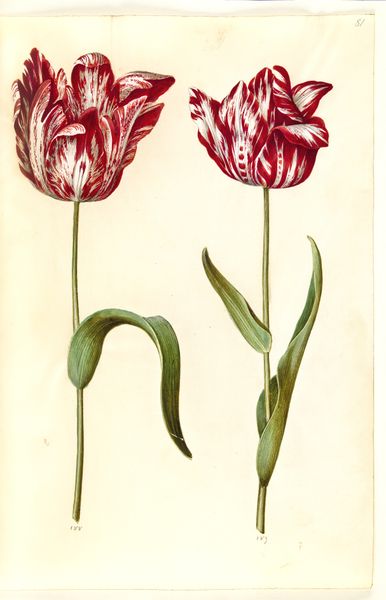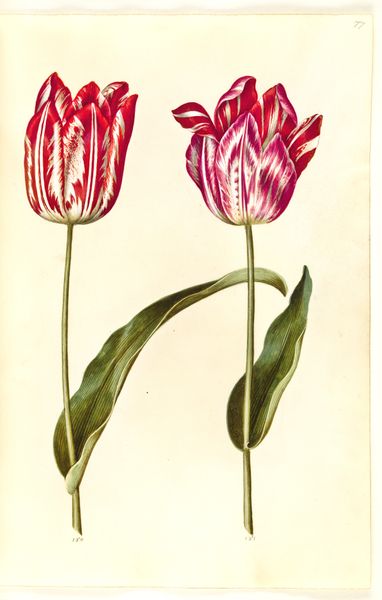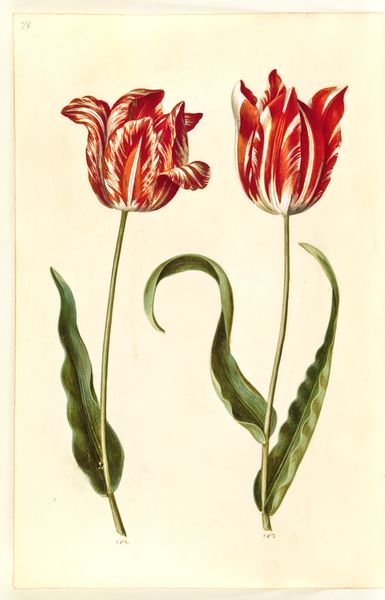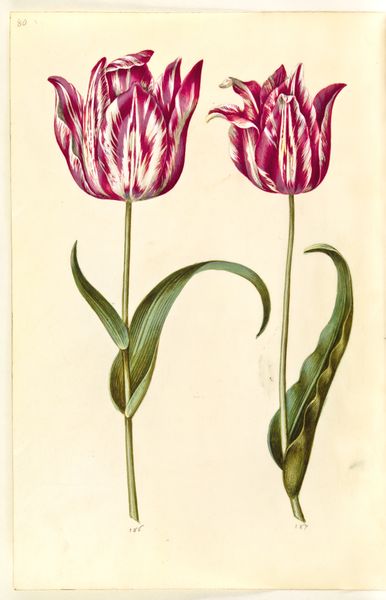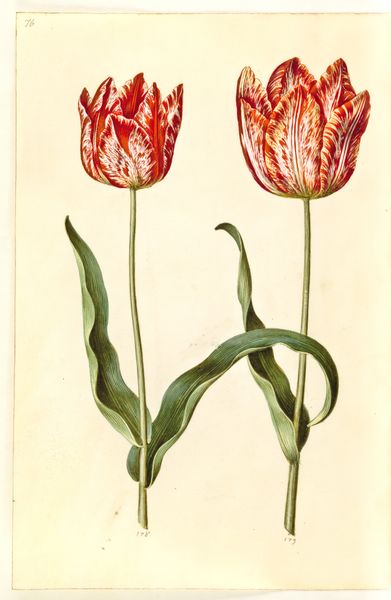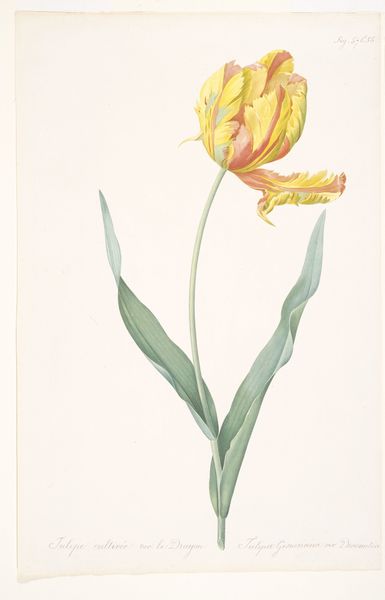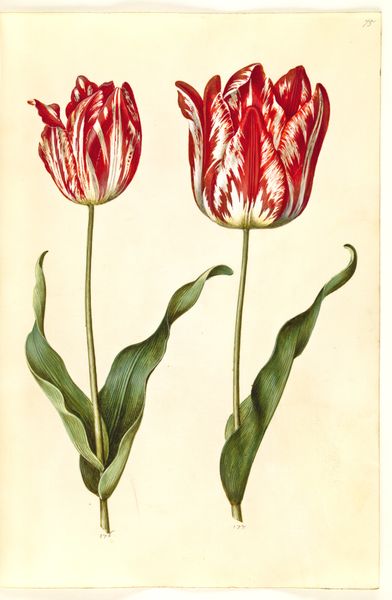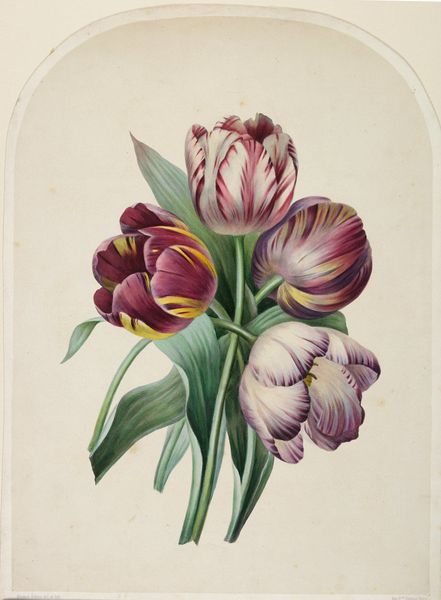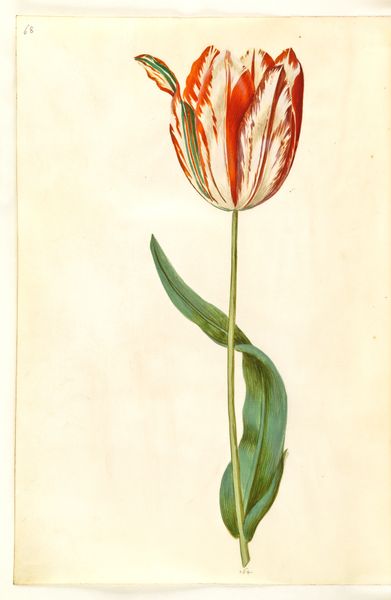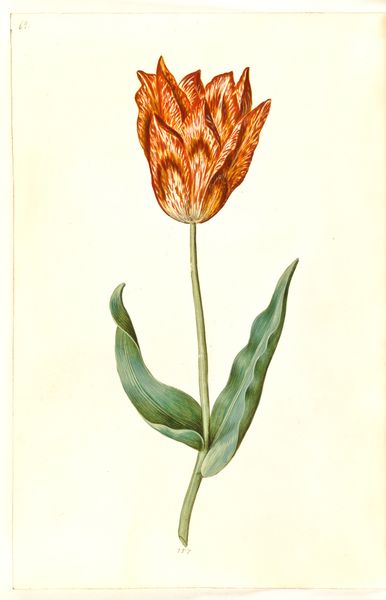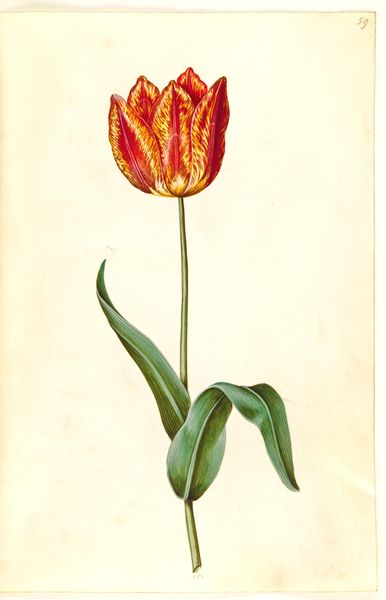
Dimensions: 360 mm (height) x 244 mm (width) (bladmaal)
Curator: It's arresting, isn’t it? Such intensity concentrated in a single bloom. Editor: Indeed. What you're looking at is titled "En tulipan med flammede kronblade", which translates to "A Tulip with Flamed Petals.” Created between 1750 and 1799, the work has been attributed to Domenico Riccardi. He employed gouache, a kind of opaque watercolor, to achieve this vibrancy. Curator: The flamed petals – a visual metaphor for passion, certainly. And the Romantic period influence is obvious here. A shift from rigid formality towards emotion. I wonder, what sort of symbolism can we assign this piece, coming from such an era? Editor: I'd venture to suggest the tulip became fashionable in Europe because of its exotic, foreign appeal. The flamed tulip specifically had a strong, yet fleeting, moment in cultural symbolism as “broken tulips” were found to express unusual color variations, much like a piece of art in its imperfection. The image becomes tied to consumer culture and economic anxiety. Curator: I never considered the commercial angle... Fascinating! So, beyond the economic dimension, wouldn’t it still speak to the growing emphasis on individual experience and unique expression prevalent in the Romantic period? Perhaps a silent language speaking of impermanence as an artistic idea? Editor: Yes, though that's something of a retrospective overlaying. I think its meaning was likely less concerned with broader trends of self-expression. Remember, many such images were commissioned by wealthy collectors as records of botanical specimens within exclusive collections; so what appears decorative to us had very pragmatic roots. This work, in that regard, becomes both art and scientific record. Curator: It highlights the evolving roles of imagery, doesn't it? The image begins as something quite functional. It reflects the specific tulip in gouache paint; its inherent nature as a beautiful but fleeting form captured through meticulous art, the tulip then evolves to become art itself. Editor: Ultimately, it demonstrates how historical forces shape not only the creation but also the interpretation of images across time. Thank you.
Comments
No comments
Be the first to comment and join the conversation on the ultimate creative platform.
